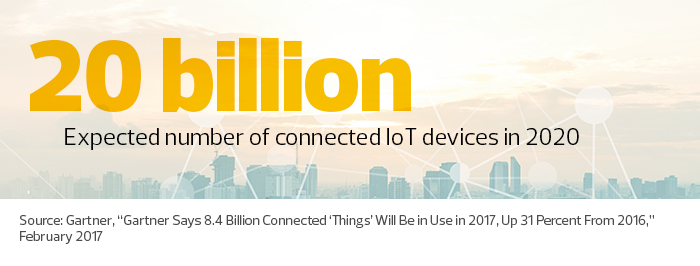Local Governments Adapt to IoT Data Demands with Fog Computing
Smart technology systems, which often operate in silos, can be a nightmare for cities to manage. Intelligent traffic and surveillance systems that function independently may send data less efficiently, forcing analysts to work in a bubble.
Enter fog computing — a term coined by Cisco Systems — now being piloted in Denver and Barcelona, Spain, to improve the efficiency of their smart city operations.
Observers often equate fog computing with edge computing, but edge computing is actually a subset of fog computing, says Helder Antunes, chairman of the OpenFog Consortium. While edge computing maintains data processing power at the edge of a network (as an alternative to maintaining that power in the cloud or a central data warehouse), fog allows computation to seamlessly flow anywhere — from the endpoint devices, to the edge, to the centralized cloud — depending on resource availability and dynamic network conditions.
As IT departments implement smart technology projects, fog tools can offer solutions for building reliable and efficient networks and endpoints.
Denver Sees Promise in Fog Computing
The Denver South Economic Development Partnership, which covers a portion of the Denver metro area, joined OpenFog in April. The organization will identify fog computing solutions that will support advanced municipal services leveraging the Internet of Things, 5G communications and embedded artificial intelligence, according to a recent press release.

“At Denver South, we are building smarter, more connected cities and utilizing smart city-related technologies throughout our region,” says Jake Rishavy, vice president of innovation for Denver South. “We see fog computing as a critical tool for enabling the advanced digital applications that will enrich the experiences for area businesses, citizens and visitors as we head into the future.”
Barcelona Sets the Fog Computing Bar
The need to find such solutions grows as the IoT expands, threatening to overwhelm cloud infrastructures with data streams from more devices. Cisco, Dell, ARM, Intel, Microsoft and Princeton University founded the OpenFog Consortium in 2015 to foster collaboration among providers of IoT solutions.
Barcelona is considered a marquee deployment of fog technology, Antunes says. The city integrated a single fog platform, rather than a silo design, which allows data sharing and analysis across multiple points on the network. This unifies waste management, traffic management and smart street lighting data in one system to provide centralized, real-time information.
“The approach allows all domains to talk to each other,” Antunes says. “We tend to look at fog as the missing-link architecture for IoT deployment.”
Overall, decision-makers have been slow to adopt fog technology, but planners in municipalities with smart city initiatives are taking notice, Antunes says. His organization plans to host the Fog World Congress in California in October, the first international conference on fog computing.








